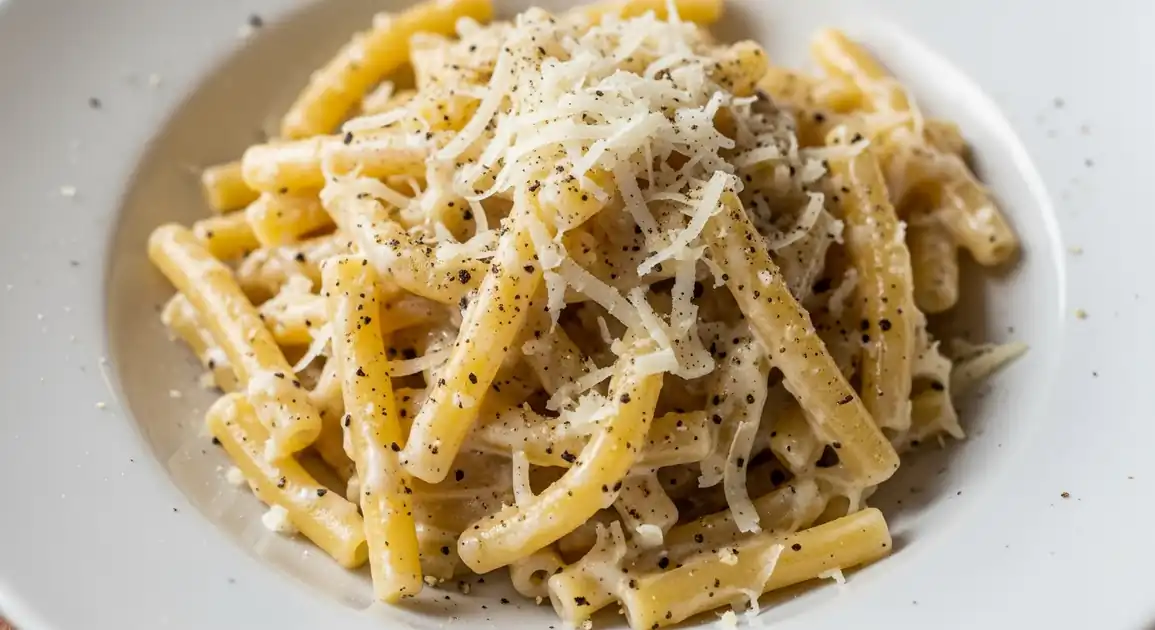Cacio e Pepe
Cacio e Pepe

Description
Rome is the definitive place to experience Cacio e Pepe. Countless trattorias and osterias across the city, particularly in neighborhoods like Testaccio and Trastevere, serve this iconic dish. Finding a truly great version, perfectly emulsified and balanced, is a culinary quest for many visitors and locals.
Dietary Information
Serving information
Serving style
Served hot in a bowl as a 'primo'. Traditionally uses Tonnarelli or Spaghetti. Garnished simply with more Pecorino and pepper. Wine pairing is common.
Quick facts
Lunch service starts around 12:30 PM, dinner around 7:30 PM. Peak dining times are later (1 PM for lunch, 8:30 PM onwards for dinner).
Safety Tips
What to Look For
-
Served piping hot, freshly prepared
Ensures the pasta hasn't been sitting and the sauce is freshly emulsified. Temperature is key for both safety and quality.
-
Reputable Trattoria/Restaurant
Choose established places known for good quality Roman pasta and proper hygiene standards.
-
Properly emulsified sauce
The sauce should be creamy and coat the pasta, not watery, oily, or clumpy with cheese. Indicates correct preparation.
-
Clean dining environment and serving
General cleanliness of the restaurant, tables, and serving staff reflects overall hygiene standards.
What to avoid
-
Lukewarm pasta or sauce
Pasta dishes cool quickly and can enter unsafe temperature zones if left sitting. Also ruins the texture.
-
Sauce that is visibly oily, separated, or clumpy
Indicates poor technique or ingredients, potentially affecting quality and freshness perception.
-
Restaurants with poor hygiene reviews or appearance
Avoid places that seem unclean or have known hygiene issues.
-
Dishes containing cream or butter (if seeking authentic version)
While not inherently unsafe, it indicates a non-traditional preparation method.
Price information
Price range
Budget tips
- Neighborhood trattorias away from major tourist sights often offer better value.
- Testaccio and Trastevere have many options across price points.
- Avoid places with overly aggressive touts outside.
- Check menu prices displayed outside before entering.
Value indicators
- Creamy, glossy sauce with visible pepper specks clinging to pasta.
- Intense, sharp aroma of Pecorino and pepper.
- Served in a simple, unpretentious setting (often a good sign for traditional food).
- Popular with local Romans, not just tourists.
- Pasta cooked perfectly 'al dente'.
Where to Find This Dish
Testaccio
Historically a working-class neighborhood, now a foodie destination known for authentic Roman cuisine and excellent Cacio e Pepe.
Testaccio Market, Former Slaughterhouse (Mattatoio)
Lunchtime, Dinner
Trastevere
Charming neighborhood with numerous trattorias, ranging from tourist-focused to genuinely traditional spots serving great pasta.
Piazza di Santa Maria in Trastevere, Villa Farnesina
Lunchtime, Dinner
Prati
Neighborhood near the Vatican, offering several well-regarded restaurants serving classic Roman dishes.
Vatican City, Cola di Rienzo shopping street
Lunchtime, Dinner
Centro Storico (Historic Center)
While touristy, hidden gems and established traditional restaurants serving authentic Cacio e Pepe exist near landmarks like Pantheon and Campo de' Fiori. Research is key.
Pantheon, Campo de' Fiori, Piazza Navona
Lunchtime, Dinner
Vendor Tips
- Look for menus featuring the 'Roman trinity': Cacio e Pepe, Gricia, Carbonara/Amatriciana.
- Reservations are recommended for popular trattorias, especially for dinner.
- Don't judge a trattoria by its simple decor; often the best food is in unpretentious settings.
- Be wary of places offering dozens of pasta types; specialization is often better for classics.
How to Order
Regional Variations
-
Tonnarelli Cacio e Pepe
(Tonnarelli Cacio e Pepe)
Using fresh, square-cut egg pasta (Tonnarelli/Spaghetti alla Chitarra) is considered by many to be the superior choice for its texture and sauce-clinging ability.
-
Spaghetti Cacio e Pepe
(Spaghetti Cacio e Pepe)
Using standard dried spaghetti is also very common and traditional.
Cultural context
History
The origins of Cacio e Pepe are rooted in the pastoral traditions of the Roman countryside. Shepherds traversing the Apennine Mountains needed simple, high-energy, non-perishable ingredients. Dried pasta, aged Pecorino Romano cheese, and black pepper were easily transportable and provided warmth and sustenance. The simple preparation method evolved into the beloved dish found in Roman trattorias today, forming part of the 'holy trinity' of Roman pasta alongside Carbonara and Gricia.
Local significance
Cacio e Pepe is fundamental to Roman identity. It's a test of a Roman cook's skill (achieving the perfect emulsion). Debates about the best Cacio e Pepe in Rome are passionate and endless.
Eating customs
- Consumed hot and relatively quickly.
- Soaking up leftover sauce with bread ('fare la scarpetta') is acceptable in informal settings but less common with pasta than with meat sauces.
- Focus is on the pasta itself, minimal distractions.